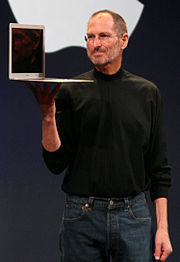Demi Moore's Human Design Chart
1/3 Emotional ProjectorDemi Moore: A Journey through Fame and Self-Discovery
Demi Moore, born on November 11, 1962, in Roswell, New Mexico, is an iconic American model and actress whose career has spanned decades, marked by both dazzling successes and challenging personal experiences. Known for her captivating performances and her trailblazing role in Hollywood, Moore’s life is also deeply intertwined with her Human Design, which offers unique insights into her personality and life path.
Early Life and Struggles
Born to teenage parents and raised amidst constant change, Demi Moore experienced a turbulent childhood. Her mother remarried, and by age 13, Moore had moved approximately 48 times and attended around 30 schools. This nomadic lifestyle contributed to her resilience and adaptability—traits often associated with her Human Design type, the Projector. Projectors thrive on managing and guiding others and are often drawn to dynamic environments.
At 15, Moore faced the tragic suicide of her stepfather, Duane Guynes, which occurred shortly after her mother left him. This period of upheaval was a defining moment in Moore’s life, pushing her towards self-reliance and independence. Her Projector type, coupled with an Emotional Inner Authority, means that Moore’s decision-making is deeply influenced by her emotional highs and lows, a factor that played a significant role in her early life decisions.
Career Beginnings and Breakthrough
After quitting school, Demi Moore began modeling, which soon led to a nude layout in OUI magazine. Her transition into acting began with a role on the daytime soap opera General Hospital (1982–1984), followed by her film debut in Choices (1981).
Moore’s Human Design Strategy is to “Wait for the Invitation,” which likely influenced her career trajectory. This strategy suggests that rather than initiating action, Moore is most successful when she is invited into opportunities, a pattern evident in her serendipitous casting in significant roles.
Her breakout role came with the film St. Elmo’s Fire (1985), where she met Emilio Estevez. Despite their engagement, the wedding was called off, showcasing the influence of her 1/3 Profile, which involves a trial-and-error process in her relationships and professional endeavors.
Rise to Stardom
Demi Moore’s career soared with her role in Ghost (1990), the highest-grossing film of that year, earning her a Golden Globe nomination. Her portrayal captivated audiences worldwide, establishing her as a leading actress in Hollywood. By 1996, she became the highest-paid actress in film history with a $12.5 million paycheck for Striptease, a testament to her remarkable talent and the recognition she received from the industry.
The success of Ghost and her other films exemplifies her Incarnation Cross of Explanation (Right Angle Cross of Explanation), which aids her in communicating and expressing complex ideas and emotions effectively, both on and off-screen.
Personal Life: Love and Challenges
Moore’s personal life has been as publicized as her professional one. In 1987, she married actor Bruce Willis. Together, they had three daughters, born in 1988, 1991, and 1994. Despite their high-profile lifestyle, the couple struggled with the demands of fame and eventually separated in 1998, finalizing their divorce in 2000.
During her marriage to Willis, Moore demonstrated the 37-40 Channel in her Human Design, a channel of marriage and partnership. This channel reflects her commitment to maintaining family bonds even amidst personal and professional challenges.
After her divorce, Moore sought solace in a quieter life in Hailey, Idaho, focusing on her role as a mother. Her Human Design Profile of 1/3 suggests she values stability and learning from life’s experiences, which became evident in this phase of her life.
New Beginnings and Continued Success
Moore’s relationship with Ashton Kutcher, who is 15 years her junior, garnered significant media attention. They married in 2005, but their relationship ended in divorce in 2011. Through these experiences, Moore’s Right Angle Cross of Explanation has been essential in articulating her narrative and engaging with public perceptions.
Despite personal setbacks, Moore continued to find success. In 2019, she released her memoir Inside Out, which became a New York Times Best Seller. The memoir offers a candid exploration of her life, embodying her Human Design’s 43-23 Channel, which focuses on sharing personal insights and breakthroughs with the world.
Conclusion: A Life of Reflection and Growth
Throughout her life and career, Demi Moore has embodied the essence of her Human Design. As a Projector, she has learned to wait for the right invitations and opportunities, using her emotional depth to navigate the complexities of Hollywood and her personal life. Her journey reflects the unique interplay of her Human Design elements, guiding her growth and transformation over the years.
Frequently Asked Questions about Demi Moore
What is Demi Moore’s Human Design type?
Demi Moore is a Projector, a type known for guiding and managing others, often thriving in environments where they are recognized and invited to share their wisdom.
How has Demi Moore’s Human Design influenced her career?
As a Projector with an Emotional Inner Authority, Moore’s career has been characterized by waiting for the right opportunities and making decisions based on emotional clarity. Her role in Ghost and other significant projects often came through invitations rather than active pursuits.
What are the key elements of Demi Moore’s Human Design profile?
Moore’s Human Design profile includes the 1/3 Profile, emphasizing a journey of trial and error, and the Right Angle Cross of Explanation, which aids her in communicating her experiences and insights effectively.
How has Demi Moore’s personal life reflected her Human Design?
Her personal relationships and life decisions often align with the characteristics of her Human Design. The 37-40 Channel highlights her commitment to partnerships, while her emotional authority influences her personal choices and resilience in the face of challenges.
Discover More Famous People
Browse and analyze over 55,000 public figures and celebrities.
Ra Uru Hu
5/1 Manifestor
Martha Stewart
4/6 Manifestor
David Lynch
4/6 Generator
Barack Obama
6/2 Projector
Steve Jobs
6/3 Generator
Vladimir Putin
5/1 Manifestor
Kim Kardashian
3/5 Generator
Michael Jackson
1/3 Projector
Marilyn Monroe
6/2 Projector
Ariana Grande
2/4 Projector
Oprah Winfrey
2/4 Generator
Johnny Depp
2/4 ManifestorWhat is HumanDesign.ai and how does it work?
Curious what makes Demi Moore tick? HumanDesign.ai instantly maps their exact birth data into a fully interactive clickable bodygraph chart, letting you hover or tap every center, channel, and gate for plain-language explanations. Bella, the platform’s built-in AI guide, adds context in real time, translating complex mechanics into everyday insights so you can see how Demi Moore’s strengths, challenges, and life themes play out on-screen.
The same tools are waiting for you. Generate your own Human Design Chart in seconds, open a library of 2000+ suggested questions, and chat with Bella as often as you like to decode your design, daily transits, and even relationship dynamics.
Want to compare energies? Save unlimited charts for friends, family, or clients, then ask Bella to reveal compatibilities, composite patterns, or coaching tips, all in one conversation thread.
Start free with core features, or unlock our Personal and Pro plans for deeper dives: unlimited Q&A, celebrity chart search spanning 55,000+ public figures, white-label PDF reports, branded content generation, and a professional profile with built-in booking for practitioners. Whether you’re exploring your own potential or guiding others, HumanDesign.ai delivers an ever-expanding toolbox of AI-powered insights—no spreadsheets, no jargon, just clarity at your fingertips.
Ready to see yours? Signup for FREE today!

